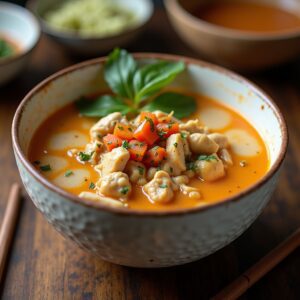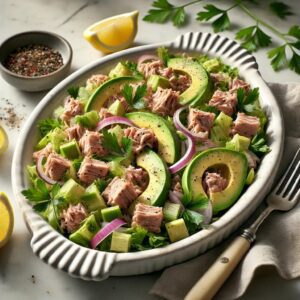

Know Your Labels: How to Decode Produce Stickers and Make Healthier Food Choices


Arya Soleil
Have you ever noticed those tiny little stickers on apples, bananas, or tomatoes at the grocery store? Most people just peel them off without a second thought. But did you know those stickers carry important information about how your produce was grown? Understanding these labels can be the difference between buying conventionally grown food, organic options, or even genetically modified organisms (GMOs)—all of which can impact your health, especially if you’re following an anti-inflammatory or clean eating lifestyle.
Welcome to your crash course in label decoding. We’re going to break down what each number means, what it tells you about the produce’s growing method, and how to use this info to shop smarter. Think of it as a little behind-the-scenes glimpse into the food system—and a tool to empower your wellness journey.
The Power of Knowing What You’re Eating
In today’s world, labels matter more than ever. The rise of industrial farming, synthetic pesticides, and GMO crops means not all produce is created equal. And while not everyone can afford to buy everything organic, knowing how to read produce stickers helps you make informed choices—even when you’re shopping on a budget.
Whether you’re avoiding certain chemicals, reducing your exposure to genetically modified foods, or simply trying to eat cleaner, understanding these simple codes puts the power back in your hands.
The PLU Code: What It Is and Why It Matters
PLU stands for “Price Look-Up,” and it’s a standardized code system developed by the International Federation for Produce Standards. These stickers usually contain a 4- or 5-digit number that tells grocery stores what type of produce it is (e.g., Fuji apple vs. Granny Smith) and how it was grown.
But here’s where it gets interesting: the number itself can tell you a lot too.
Let’s break it down:
4-Digit Code (Typically Begins With a 3 or 4): Conventionally Grown
If the sticker on your fruit or veggie has a 4-digit code starting with a 3 or 4 (e.g., 4011 for bananas), that means it was conventionally grown. This is the standard method of modern agriculture that often involves the use of synthetic pesticides, chemical fertilizers, and non-organic soil management practices.
While these foods are generally considered safe to eat, many people are concerned about the long-term health effects of consuming pesticide residues and supporting non-sustainable farming practices.
When to be cautious: If you’re trying to reduce your toxic load or have a sensitive system (gut issues, autoimmune disease, etc.), it might be worth prioritizing organic versions of produce from the “Dirty Dozen” list—these are conventionally grown foods most likely to contain pesticide residues.
5-Digit Code Starting With 9: Organically Grown
This is the gold standard. If the sticker has five digits and begins with a 9 (like 94011 for organic bananas), it means the produce is certified organic. That means it was grown without synthetic pesticides, genetically modified seeds, or artificial fertilizers.
Organic farming also often emphasizes sustainability, soil health, and crop rotation—all of which benefit both the planet and your body.
Why choose organic: Organic foods are generally better for reducing inflammation, supporting gut health, and avoiding hormone disruptors found in many conventional farming chemicals. If your budget allows, prioritize organic for foods you eat frequently or don’t peel (like berries, leafy greens, and apples).
5-Digit Code Starting With 8: Genetically Modified (GMO)
A sticker that starts with an 8 and has five digits (like 84011) indicates genetically modified produce. GMOs are plants that have had their DNA altered in a lab to resist pests, tolerate herbicides, or improve shelf life. While GMO technology has its proponents, there are concerns about how it may impact long-term health, biodiversity, and the environment.
Important note: While the 8-prefix is technically designated for GMOs, it’s not always enforced. In fact, many GMO foods are not labeled in stores due to outdated or inconsistent regulation. That’s why choosing organic is often the best way to avoid GMOs altogether.
The Problem With GMO Labeling (and Why It’s Still Confusing)
Even though PLU codes are designed to help us identify GMOs, many companies don’t actually use the “8” prefix. Instead, they label GMO produce with a standard 4-digit code, which makes it easy to miss unless you do your homework.
To add to the confusion, not all GMO crops are available as whole produce in stores—many end up in processed foods (like corn syrup or soy lecithin). Still, some common GMO fruits and vegetables include:
- Papaya from Hawaii (GMO to resist virus)
- Some varieties of zucchini and yellow squash
- Sweet corn
- Some apples (engineered not to brown)
So how can you avoid GMOs if the system isn’t reliable? Stick to organically labeled produce (5-digit codes starting with 9), which by definition cannot be genetically modified.
Dirty Dozen vs. Clean Fifteen: Your Smart Shopping Guide
If buying everything organic isn’t realistic for your budget (which is true for many of us!), the Environmental Working Group (EWG) releases an annual list that makes the decision easier.
The Dirty Dozen: These are the foods most likely to have high pesticide residue when conventionally grown. Buy these organic when you can.
- Strawberries
- Spinach
- Kale, collard & mustard greens
- Peaches
- Pears
- Nectarines
- Apples
- Grapes
- Bell peppers
- Cherries
- Blueberries
- Green beans
The Clean Fifteen: These have lower pesticide loads even when grown conventionally, so you can safely buy non-organic.
- Avocados
- Sweet corn (watch for GMO labeling!)
- Pineapples
- Onions
- Papayas
- Sweet peas (frozen)
- Asparagus
- Honeydew melon
- Kiwi
- Cabbage
- Watermelon
- Mushrooms
- Mangoes
- Sweet potatoes
- Carrots
How to Be a Savvy Shopper (Without Stressing Out)
- Shop with a list
If you’re trying to eat clean or reduce inflammation, make a weekly grocery list and highlight the items from the Dirty Dozen to buy organic when possible. - Check the PLU stickers
Take a second to glance at those produce stickers. A 4-digit number is conventional, a 5-digit code starting with 9 is organic, and anything starting with 8 (rare as it is) is GMO. - Know what you’re eating most
Prioritize organic versions of foods you eat often. If you have a banana every day, it’s worth choosing organic. But if you eat pineapple once a month, conventional is probably fine. - Wash everything—even organic
Even organic produce can carry bacteria from soil or handling, so give everything a good rinse with water. A DIY vinegar or baking soda soak can add extra protection. - Buy seasonal and local
Local, seasonal food is often fresher, more nutrient-dense, and less likely to have traveled thousands of miles. Farmers’ markets and local co-ops may offer organic or low-spray options at lower prices than the grocery store.
Why This Matters in an Anti-Inflammatory Lifestyle
Inflammation is at the root of so many chronic health issues: fatigue, joint pain, skin problems, digestive troubles, and even autoimmune flare-ups. One of the best ways to reduce inflammation is to limit your exposure to pesticides, additives, and ultra-processed foods—which includes making better produce choices.
Eating anti-inflammatory foods like leafy greens, berries, ginger, and fatty fish is powerful. But what’s just as important is knowing how those foods are grown. A spinach salad loses a bit of its healing magic if it’s loaded with chemical residues.
Understanding PLU labels helps you get the most out of your clean eating efforts.
Quick Label Cheat Sheet for Your Wallet or Phone
Here’s a super simple guide you can save or write down:
- 4-digit code (starts with 3 or 4): Conventional
- 5-digit code starting with 9: Organic
- 5-digit code starting with 8: GMO (though rarely used)
Final Thoughts: Read the Sticker, Fuel Your Body Right
Food labels are more than a barcode. They’re a window into how your food was grown and how it may affect your health. And while a sticker may seem small, the impact of knowing what it means is huge.
With just a little awareness, you can make better decisions every time you shop. You don’t have to overhaul your whole life—just start with one or two swaps. Maybe you buy organic apples this week. Maybe you skip those conventionally grown strawberries and grab blueberries instead. Maybe you pause at the grocery store and actually read the PLU sticker for the first time ever.
Each tiny choice builds a lifestyle that supports your energy, immunity, and long-term health. Food is medicine—and now you know how to read the label.
Recommended Reads

- June 9, 2025
Castor Oil in the Navel: A Forgotten Practice That Supports Digestion and Sleep
Home News Healthy Habits & Lifestyle Health Conditions &...


- June 9, 2025
Turmeric for Ulcers: A Natural Way to Soothe and Protect Your Stomach
Home News Healthy Habits & Lifestyle Health Conditions &...


- June 9, 2025
The Healing Power of Castor Oil Compresses: A Natural Therapy for Detox, Sleep, and Circulation
Home News Healthy Habits & Lifestyle Health Conditions &...


- June 9, 2025
Medicinal Mushrooms: Ancient Remedies with Modern Benefits
Home News Healthy Habits & Lifestyle Health Conditions &...


- June 9, 2025
Triphala: The Ancient Herbal Blend That Supports Digestion, Detox, and Longevity
Home News Healthy Habits & Lifestyle Health Conditions &...


- June 9, 2025
Mullein: Herbal Support for Lung Health and Clear Breathing
Home News Healthy Habits & Lifestyle Health Conditions &...

Know Your Labels: How to Decode Produce Stickers and Make Healthier Food Choices

Have you ever noticed those tiny little stickers on apples, bananas, or tomatoes at the grocery store? Most people just peel them off without a second thought. But did you know those stickers carry important information about how your produce was grown? Understanding these labels can be the difference between buying conventionally grown food, organic options, or even genetically modified organisms (GMOs)—all of which can impact your health, especially if you’re following an anti-inflammatory or clean eating lifestyle.
Welcome to your crash course in label decoding. We’re going to break down what each number means, what it tells you about the produce’s growing method, and how to use this info to shop smarter. Think of it as a little behind-the-scenes glimpse into the food system—and a tool to empower your wellness journey.
The Power of Knowing What You’re Eating
In today’s world, labels matter more than ever. The rise of industrial farming, synthetic pesticides, and GMO crops means not all produce is created equal. And while not everyone can afford to buy everything organic, knowing how to read produce stickers helps you make informed choices—even when you’re shopping on a budget.
Whether you’re avoiding certain chemicals, reducing your exposure to genetically modified foods, or simply trying to eat cleaner, understanding these simple codes puts the power back in your hands.
The PLU Code: What It Is and Why It Matters
PLU stands for “Price Look-Up,” and it’s a standardized code system developed by the International Federation for Produce Standards. These stickers usually contain a 4- or 5-digit number that tells grocery stores what type of produce it is (e.g., Fuji apple vs. Granny Smith) and how it was grown.
But here’s where it gets interesting: the number itself can tell you a lot too.
Let’s break it down:
4-Digit Code (Typically Begins With a 3 or 4): Conventionally Grown
If the sticker on your fruit or veggie has a 4-digit code starting with a 3 or 4 (e.g., 4011 for bananas), that means it was conventionally grown. This is the standard method of modern agriculture that often involves the use of synthetic pesticides, chemical fertilizers, and non-organic soil management practices.
While these foods are generally considered safe to eat, many people are concerned about the long-term health effects of consuming pesticide residues and supporting non-sustainable farming practices.
When to be cautious: If you’re trying to reduce your toxic load or have a sensitive system (gut issues, autoimmune disease, etc.), it might be worth prioritizing organic versions of produce from the “Dirty Dozen” list—these are conventionally grown foods most likely to contain pesticide residues.
5-Digit Code Starting With 9: Organically Grown
This is the gold standard. If the sticker has five digits and begins with a 9 (like 94011 for organic bananas), it means the produce is certified organic. That means it was grown without synthetic pesticides, genetically modified seeds, or artificial fertilizers.
Organic farming also often emphasizes sustainability, soil health, and crop rotation—all of which benefit both the planet and your body.
Why choose organic: Organic foods are generally better for reducing inflammation, supporting gut health, and avoiding hormone disruptors found in many conventional farming chemicals. If your budget allows, prioritize organic for foods you eat frequently or don’t peel (like berries, leafy greens, and apples).
5-Digit Code Starting With 8: Genetically Modified (GMO)
A sticker that starts with an 8 and has five digits (like 84011) indicates genetically modified produce. GMOs are plants that have had their DNA altered in a lab to resist pests, tolerate herbicides, or improve shelf life. While GMO technology has its proponents, there are concerns about how it may impact long-term health, biodiversity, and the environment.
Important note: While the 8-prefix is technically designated for GMOs, it’s not always enforced. In fact, many GMO foods are not labeled in stores due to outdated or inconsistent regulation. That’s why choosing organic is often the best way to avoid GMOs altogether.
The Problem With GMO Labeling (and Why It’s Still Confusing)
Even though PLU codes are designed to help us identify GMOs, many companies don’t actually use the “8” prefix. Instead, they label GMO produce with a standard 4-digit code, which makes it easy to miss unless you do your homework.
To add to the confusion, not all GMO crops are available as whole produce in stores—many end up in processed foods (like corn syrup or soy lecithin). Still, some common GMO fruits and vegetables include:
- Papaya from Hawaii (GMO to resist virus)
- Some varieties of zucchini and yellow squash
- Sweet corn
- Some apples (engineered not to brown)
So how can you avoid GMOs if the system isn’t reliable? Stick to organically labeled produce (5-digit codes starting with 9), which by definition cannot be genetically modified.
Dirty Dozen vs. Clean Fifteen: Your Smart Shopping Guide
If buying everything organic isn’t realistic for your budget (which is true for many of us!), the Environmental Working Group (EWG) releases an annual list that makes the decision easier.
The Dirty Dozen: These are the foods most likely to have high pesticide residue when conventionally grown. Buy these organic when you can.
- Strawberries
- Spinach
- Kale, collard & mustard greens
- Peaches
- Pears
- Nectarines
- Apples
- Grapes
- Bell peppers
- Cherries
- Blueberries
- Green beans
The Clean Fifteen: These have lower pesticide loads even when grown conventionally, so you can safely buy non-organic.
- Avocados
- Sweet corn (watch for GMO labeling!)
- Pineapples
- Onions
- Papayas
- Sweet peas (frozen)
- Asparagus
- Honeydew melon
- Kiwi
- Cabbage
- Watermelon
- Mushrooms
- Mangoes
- Sweet potatoes
- Carrots
How to Be a Savvy Shopper (Without Stressing Out)
- Shop with a list
If you’re trying to eat clean or reduce inflammation, make a weekly grocery list and highlight the items from the Dirty Dozen to buy organic when possible. - Check the PLU stickers
Take a second to glance at those produce stickers. A 4-digit number is conventional, a 5-digit code starting with 9 is organic, and anything starting with 8 (rare as it is) is GMO. - Know what you’re eating most
Prioritize organic versions of foods you eat often. If you have a banana every day, it’s worth choosing organic. But if you eat pineapple once a month, conventional is probably fine. - Wash everything—even organic
Even organic produce can carry bacteria from soil or handling, so give everything a good rinse with water. A DIY vinegar or baking soda soak can add extra protection. - Buy seasonal and local
Local, seasonal food is often fresher, more nutrient-dense, and less likely to have traveled thousands of miles. Farmers’ markets and local co-ops may offer organic or low-spray options at lower prices than the grocery store.
Why This Matters in an Anti-Inflammatory Lifestyle
Inflammation is at the root of so many chronic health issues: fatigue, joint pain, skin problems, digestive troubles, and even autoimmune flare-ups. One of the best ways to reduce inflammation is to limit your exposure to pesticides, additives, and ultra-processed foods—which includes making better produce choices.
Eating anti-inflammatory foods like leafy greens, berries, ginger, and fatty fish is powerful. But what’s just as important is knowing how those foods are grown. A spinach salad loses a bit of its healing magic if it’s loaded with chemical residues.
Understanding PLU labels helps you get the most out of your clean eating efforts.
Quick Label Cheat Sheet for Your Wallet or Phone
Here’s a super simple guide you can save or write down:
- 4-digit code (starts with 3 or 4): Conventional
- 5-digit code starting with 9: Organic
- 5-digit code starting with 8: GMO (though rarely used)
Final Thoughts: Read the Sticker, Fuel Your Body Right
Food labels are more than a barcode. They’re a window into how your food was grown and how it may affect your health. And while a sticker may seem small, the impact of knowing what it means is huge.
With just a little awareness, you can make better decisions every time you shop. You don’t have to overhaul your whole life—just start with one or two swaps. Maybe you buy organic apples this week. Maybe you skip those conventionally grown strawberries and grab blueberries instead. Maybe you pause at the grocery store and actually read the PLU sticker for the first time ever.
Each tiny choice builds a lifestyle that supports your energy, immunity, and long-term health. Food is medicine—and now you know how to read the label.
Recommended Reads

- June 9, 2025
Castor Oil in the Navel: A Forgotten Practice That Supports Digestion and Sleep
Home News Healthy Habits & Lifestyle Health Conditions &...


- June 9, 2025
Turmeric for Ulcers: A Natural Way to Soothe and Protect Your Stomach
Home News Healthy Habits & Lifestyle Health Conditions &...


- June 9, 2025
The Healing Power of Castor Oil Compresses: A Natural Therapy for Detox, Sleep, and Circulation
Home News Healthy Habits & Lifestyle Health Conditions &...


- June 9, 2025
Medicinal Mushrooms: Ancient Remedies with Modern Benefits
Home News Healthy Habits & Lifestyle Health Conditions &...


- June 9, 2025
Triphala: The Ancient Herbal Blend That Supports Digestion, Detox, and Longevity
Home News Healthy Habits & Lifestyle Health Conditions &...


- June 9, 2025
Mullein: Herbal Support for Lung Health and Clear Breathing
Home News Healthy Habits & Lifestyle Health Conditions &...



